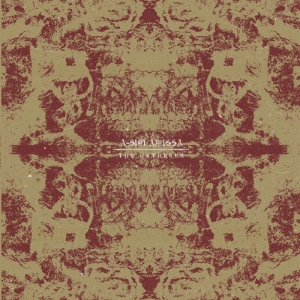
In 2011, Gizeh Records owner Richard Knox (also in e.g. Shield Patterns, Glissando and The Rustle Of The Stars) started a project called A-Sun Amissa as an instrumental outlet for his many ideas. In collaboration with many well-known international colleagues, he recorded and released two albums via his own label, You Stood Up For Victory, We Stood Up For Less and Desperate In Her Heavy Sleep, as well as a live registration and a co-operation with Adoran / Caudal / Nadja’s Aidan Baker. The latter is part of A-Sun Amissa’s line-up too, and so are musicians like Angela Chan (Tomorrow We Sail, Lanterns On The Lake), Colin H. Van Eeckhout (Amenra, CHVE, Harlowe, Absent In Body, Sembler Deah etc.), Frédéric D. Oberland (The Rustle Of The Stars, Farewell Poetry, Foudre!, Oiseaux-Tempête), Gareth Davis (Shivers, Oiseaux-Tempête, Mere, The Whalers Collective, Machinefabriek a.o.), Owen Pegg (Hundred Year Old Man), Claire Brentnall (Shield Patterns), Aaron Martin (From The Mouth Of The Sun) or David McLean (Gnod).
It has been quite a long time, but Richard and his crowd finally return with a new studio recording, called The Gatherer, this time via Belgium’s finest Consouling Sounds (who else?). It was recorded at several studios (especially Cloud Blunt Moon), produced by Richard himself, and mixed by Richard and collaborating artist Owen. The result counts four lengthy tracks, lasting in between nine and fourteen minutes (total running time: about forty-six minutes).
Those who know the former recordings might be little surprised, for The Gatherer differs from the past on several subjects. Yet still, you will understand the magnificence of Richard’s creativity. Let’s dissect it step by step. Opener Colossus Survives (nine minutes of length) starts quite ominous, with field recordings and samples, weird synths and a haunting blow section (saxophone and clarinet, I think). After two minutes and something, different percussions join, and so do jazzy piano tunes, before it suddenly moves over towards a frenzy, experimental mixture of Oriental sounds, electronic beats, ambient synth lines and aspects of Free-Jazz. It sounds quite overwhelming and thick, like a poisonous fog surrounding you on a walk through cold, nebulae fields. The mist before your eyes blinds you, you start gasping for air. All light fades away, and what remains is anxiety, loneliness and discomfort, helplessness in the midst of those endless fields… Anodyne Nights For Somnolent Strangers (with its length of 14:15 minutes it is the longest composition on the album) is even heavier and denser in execution. The atmosphere is like the sonic definition of a nightmare, and the addition of electric guitars surely strengthens that suffocative feeling during the first fragments. Soon it evolves into a mesmerizing soundscape, haunting, eerie, heavy, combining elements from Dark Drone and Dark Ambient in a mostly organic way. The experience permanently evolves, sometimes expansive, then again returning towards an intimacy and introversion, and often, suddenly, penetrated by unexpected yet very fitting fragments, based on samples (just crazy is the discussion in between two African women) and field recordings, sonic experimentalism and industrial machinery. Jason Molina’s Blues, the third composition on The Gatherer (clocking almost eleven minutes), creates an atmosphere of anxiety and coldness as from the very beginning – what a great start! Church bell-alike sounds, dense and obscure drones and floating strings set tone for another journey though improvised dimensions where no light, and no life, dwells. The viola teases and, at the same time, frightens, while at the background sounds of post-apocalyptic emptiness, in a repeating way, darken the whole aural experience. The saxophone parts, which carry the basic structure of the better part of this song, are just hypnotic, in a Badalamenti’an way, as if this could be created to be part of a soundtrack for one or another Lynch project. There is a certain ethereal feeling going on, divine and introspective once again, delving into the core of the subconsciousness. The evolution never stops, and the intricate aspects of being pounded and pushed forward are never performed with exaggeration – prominent and profound, yet modest and intimate at the same time. The Recapitulation (11:52), finally, is the most ominous and horrifying piece out of four. Mechanic beats and industrialised noisescapes create an atmosphere of post-nuclear emptiness, leaving the listener alone, abandoned, as a sole entity in a huge world where no life dwells anymore. Here too, permanently evolutions colour (or is it: decolorize) that travel through space and time. At about one third of the track, saxophone and voices, and eventually clarinet too, join the percussion-sounding beats and dreamy keys, transforming into a meditative and hypnotic sonic state of mind. At about eight minutes, everything seems to fade away into oblivion - empty spaces blur the listener’s vision, making us consent in the knowledge of eternal nothingness. It’s all over, we are not anymore…
